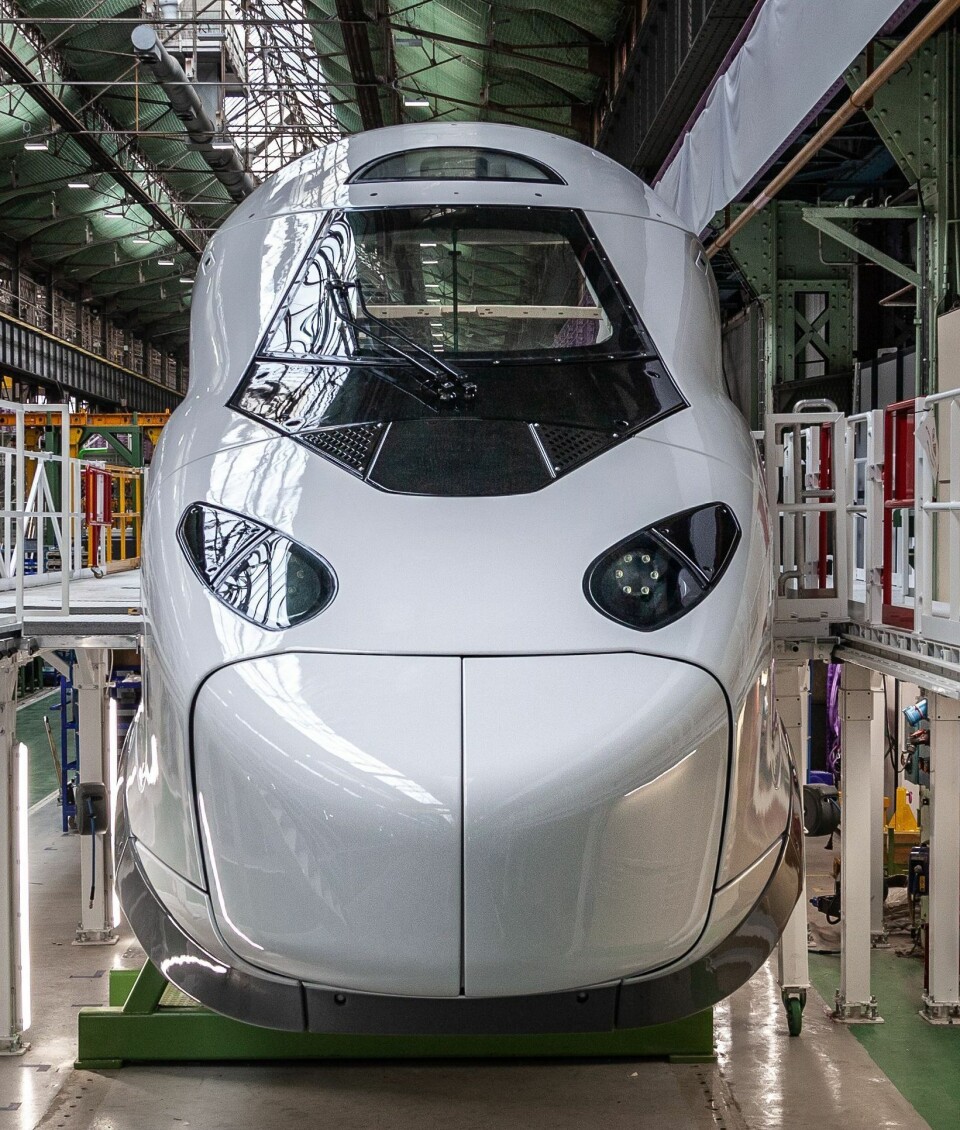-
New rules for British dual nationals entering UK: How are those in France affected?
They will need to visit on UK passport or with £550 document
-
Trump calls for Marine Le Pen to be freed (but she is not in prison)
US president said her embezzlement court case was a ‘witch hunt’
-
France’s €3 book delivery fee challenged in EU court by Amazon
Online retailer said measure is protectionist and ‘in breach of EU laws’
See France’s superslick and eco-friendly TGV of the future
The TGV M will use 20% less energy than existing models, while maintaining the same top speed of 320km/h

President Emmanuel Macron was at Paris’ Gare de Lyon on Friday (September 17) to celebrate the 40th anniversary of France’s trains à grande vitesse (TGV) and unveil a model of the “TGV of the future.”
Bienvenue au TGV du futur : le « TGV M » ! Déployé en France à partir de 2023, il sera plus accessible, plus connecté et plus écologique. pic.twitter.com/pFGR9NAZbb
— Emmanuel Macron (@EmmanuelMacron) September 17, 2021
Around 12 TGV Ms are expected to enter common circulation in early 2024, initially serving the southeast of France, and manufacturer Alstom will continue to supply them until 2031.
Previously, new TGV models have been marketed based on the speeds that they can reach. However, in the TGV M Alstom sought to create an “innovative and efficient” train with a smaller carbon footprint.
The new train — of which SNCF ordered 100 in 2018 at a cost of €2.7billion — will use 20% less energy than the existing model, while maintaining its top speed of 320km/h (199m/h).
It will also be able to carry 20% more passengers — 740 as compared to the current maximum of 600 — and be more adaptable, bringing with it the possibility of adjusting the number of carriages, switching first class to second class and reconfiguring the interior of each car.
Mesdames messieurs welcome à bord du TGV M : une mousse qui reproduit la tenue des ressort d'un matelas#40ansTGV pic.twitter.com/8LQ5p99oHy
— Philippe Peray ® (@Philippe_Peray) September 17, 2021
The new model will be 97% recyclable, while generations in use today are 90% recyclable.
SNCF estimates that the TGV M’s design will bring its maintenance costs down by 30%.
In April, Mr Macron’s government pledged €6.5billion to enhance France’s high speed rail offering and encourage train use to reduce emissions.
This sum will contribute towards the development of TGV services from Bordeaux-Toulouse, Nice-Marseille and Montpellier-Béziers, with an extension to Perpignan.
🔵 Nous avons dévoilé aujourd'hui avec @AlstomFrance le "nez" du #TGVM, qui s’inscrit pleinement dans les engagements environnementaux du programme #PlanèteVoyages. En attendant les premières circulations prévues en 2024, 6 choses à savoir sur ce nouveau train 👇 pic.twitter.com/CMdjH6bfiE
— SNCF Voyageurs (@SNCFVoyageurs) May 26, 2021
Mr Macron has also announced the elimination of two taxes totalling approximately €200million per year, which normally apply to TGVs and help to finance Intercités trains.
“This decade will be about innovation for the TGV,” said Mr Macron at the Gare de Lyon, where he was joined by Economy Minister Bruno Le Maire and Transport Minister Jean-Baptiste Djebbari.
In the future, Alstom hopes that its “innovative” TGV M will run in other European countries, following the example of services such as SNCF’s Ouigo TGV, which launched a Madrid-Barcelona line in May.
Related articles
France’s health pass: the rules for TGVs and other train journeys
SNCF in ‘historic’ loss of Marseille-Nice route to private competitor
























